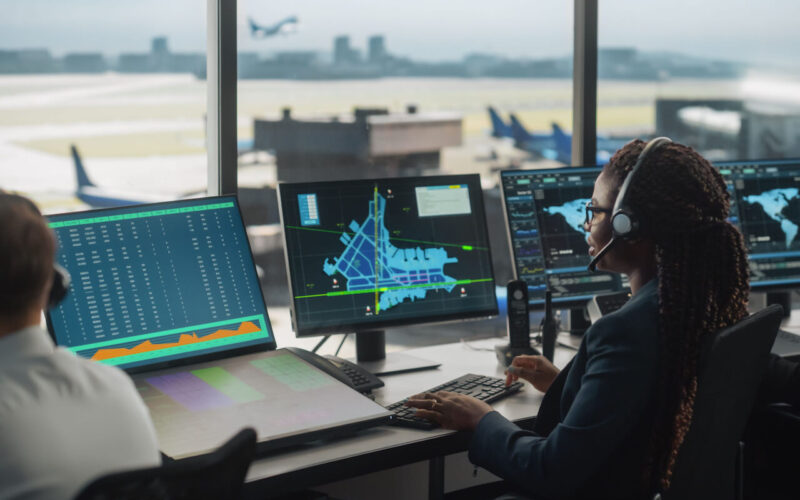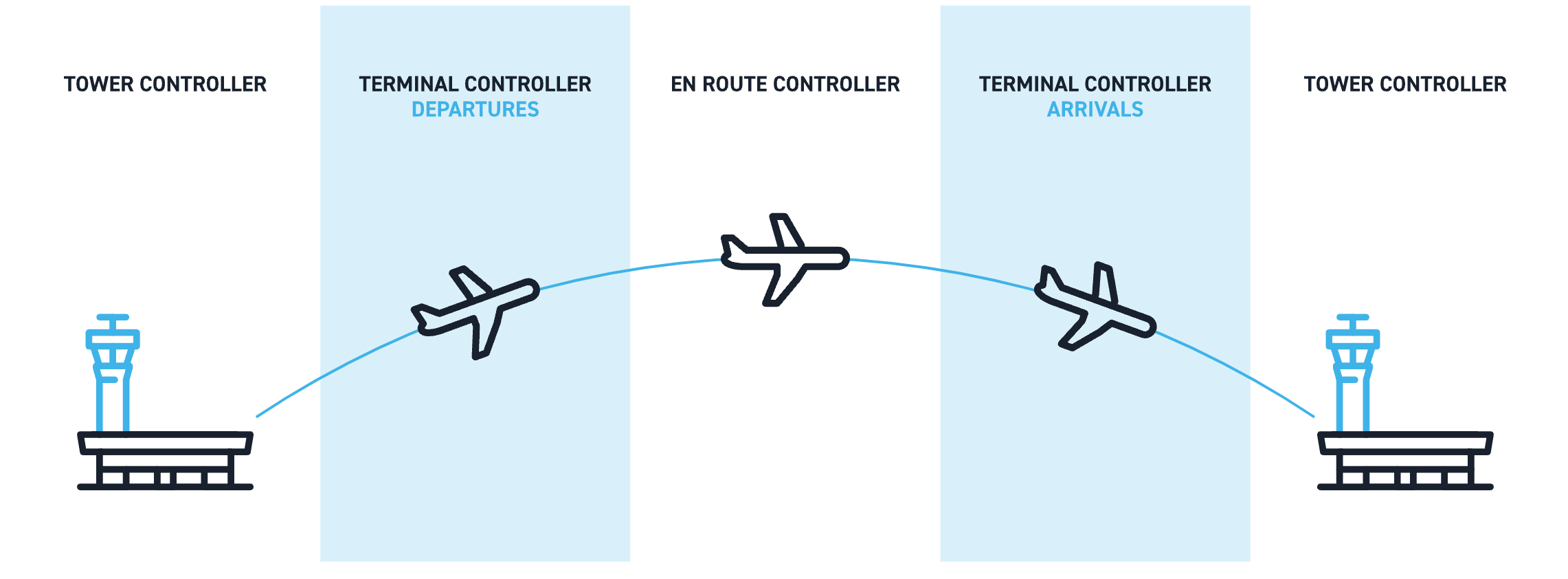October 20 is International Day of the Air Traffic Controller. The commemorative date was created to celebrate the anniversary of the International Federation of Air Traffic Controllers’ Associations (IFATCA), which was founded on the same date in 1961.
Air traffic controllers are the quiet heroes who guide pilots to safety. To mark the occasion, AeroTime would like to celebrate the hard work and dedication of the people on the ground (and in the towers) who help make air travel as safe as possible.
Ranked number 10 on a 2022 list of “The 30 Most Stressful Jobs” compiled by online career resource Career Diet, it is far from an easy role.
So, here are some things that you should probably know if you’re considering a career in air traffic control.
There’s more than one type of air traffic controller
There are three types of air traffic controllers, each involved in different parts of a flight.
While different countries have varying yet similar terms for the job, overall air traffic controllers typically fall into three general roles responsible for different stages of a flight.
-
Tower controllers
They work inside the tall, glass-covered towers that we see in airports, officially called airport traffic control towers. They manage aircraft movements in and near an aerodrome. Aerodrome refers to any location that can carry out any flight operations regardless of the type of aircraft.
-
Approach and departure controllers
These controllers work in the radar room, managing the flow of aircraft as they arrive and depart from airports.
-
En route controllers
These controllers work at Air Route Traffic Control Centers (ARTCC) and use surveillance technology to manage aircraft movements in upper airspace, including continental and oceanic routes.
Types of air traffic controllers. Image credit: airservicesaustralia.com
Being an air traffic controller provides financial stability
The rumors are true. Working in air traffic control pays off. On average, air traffic controllers are paid six-figure salaries because the nature of the work is stressful, exhausting, and leaves no room for error.
2021 data from the US Bureau of Labor Statistics shows that the median salary of air traffic controllers per year is $129,750 / $62.38 per hour. This is more than double the average annual salary for all occupations, which is $51,960.
Data from the FAA suggests a higher figure, showing that the median annual wage for air traffic controllers was $138,556 in 2021.
The below TikTok video created by an air traffic controller went viral after she revealed that she earns $145,277 per year, and her hourly rate is $69. She clarified that the figure is before any overtime pay or differentials.
@lima_sierra #stitch with @itsnitababyyy Air traffic controllers are compensated pretty well… #salary #salarychallenge #money #moneytok original sound – LS
In the comments section, many viewers asked how they can ‘sign up’ for this kind of job. However, a couple of commenters acknowledged the hard work required to be an air traffic controller. One viewer commented: “If most people mess up on their job, it’s not a big deal. If she messes up in her job, people could die. Absolutely a fair compensation.”
Another viewer noted: “I can’t function at a job that requires 100% accuracy.”
You must begin your air traffic controller training course no later than the age of 31
If you are thinking of becoming an air traffic controller, not only should you consider the move carefully, you also need to decide quickly. Before you turn 31, specifically.
We often hear that “age is just a number”, but not for the FAA, especially when it comes to a career in air traffic control.
This is because the FAA has determined through extensive research that the older someone is, the harder it is for them to complete the rigorous training.
The research was conducted in 1971, and has the title, “The Relationship Between Chronological Age and Aptitude Test Measures of Advanced Air Traffic Control Trainees.”
The study found: “On most tests, performance means for subjects over age 34 were significantly lower than those obtained for the younger trainees, and their attrition rate for the training course was three times that of their younger classmates. The results indicated that greater effectiveness in screening such applicants could be attained if eligibility standards were modified to include consideration of both age and aptitudes.”
According to the FAA though, those who already have experience working in air traffic control can be hired up until they are 35.
Air traffic controllers must retire by the age of 56
Due to the intensity of the job, the FAA makes it mandatory for air traffic controllers to retire by the age of 56.
In 2005, the Civil Aerospace Medical Institute and the FAA created a report called, “Relationship of Air Traffic Control Specialist Age to En Route Operational Errors.”
It found that “the odds of operational error (OE) for older controllers (aged 56 above), were 1.02 times greater than the odds for younger controllers (aged 55 and below).”
In the United States, a worker needs at least 25 years of service in a federal role before they are able to retire and receive benefits.
There are nearly 6,000 women in the FAA’s Air Traffic Organization
There are 17,943 air traffic controllers in the United States, and 6,000 are women. It’s a small number which needs to increase, but it’s a big improvement from 1971-1972, where a study between age and loss of proficiency referred to air traffic control as a “young man’s game”.
Although women only take up 19% of air traffic controllers, the FAA has made provisions, such as paid parental leave and a better structured bidding process, in order to give women a better chance at landing a position.
In March 2020, air traffic controllers at New York Center celebrated a milestone in time for Women’s History Month when the center completed an entire shift with all 13 positions staffed by women.
—
Have you made up your mind yet about becoming an air traffic controller?
Try taking this quiz to see if you’ve got what it takes to be one.


